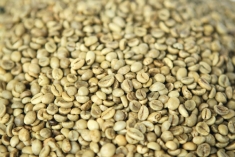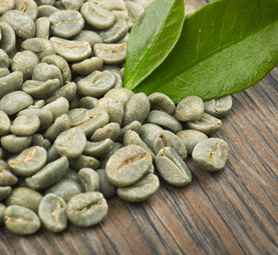
Administrator
Thank you to visit our website, for all the question please contact the administrator - General economic department.
Email: info@mascopex.com
RABOBANK'S COFFEE PRICE PREDICTION
Monday, 28 March 2016 00:00Longitudinal survey after thousands of kilometers long, visiting hundreds of points,plus the financial operations and prices on the futures floor, investment banking-trade of agricultural products of the Netherlands Rabobank has estimated the averageprice last 3 months of the year 2016 with the London robusta futures floor is 1600 USD/ton November base-2016 and the floor of the New York arabica Futures is 133 cts/lb.
Yet the ink dries up, release the two floor price exceeds the predicted: price Londonup 1605 per ton and New York 141.40 cts/lb (transaction date 23-3 month basis last year).
Know that the prediction is not necessarily true "disconnected". Besides this is the predicted average rate all 3-11 and 12-10. Business world sometimes need "project as long as" this to earn money or against the risk to himself as if anyone believes in the predictions.
Suppose the person believe they often have numbers like 1600 +-+/-65 then the last 3 month price fluctuations will in 1665/1535.
Why take 65 without other number? From the beginning of March-2016, the London price rise approximately 100 USD. If there are waves of deep correction, in bad cases, take back 2/3 what was received. Simple math on should only be used as an example. You can use another one to replace the number 65 is recommended.
Arabica floors, in this time of rising 21 cts/lb. You choose the numbers would +-7 or+/-14. If the +/-7 cts/lb then the maximum figures were carved up 23-9. Now, the latest newspaper Convention will decide for his wholesale. Please rephrase that on this is only way to business firms currently regulate the sale talk for themselves independently, instead of calculating techniques advocated herd purchase from several dozen years on the term floor as many people in our country are used.
Scientists Help Vietnam’s Rice Farmers Adapt To Climate Change, Amid Major Drought
Thursday, 22 March 2012 15:53Scientists are developing more resistant varieties of rice to help farmers in Vietnam adapt to climate change, amid the country’s worst drought in 90 years.
The drought, as well as the related flow of saltwater upriver, has destroyed 159,000 hectares of rice paddies and left almost one million people lacking drinking water, according to a new UN report. Another half million hectares are expected to be damaged by mid-year.
In line with its work in other Asian countries, the Philippines-based International Rice Research Institute has been breeding high quality “climate-smart rice varieties” that mature quickly, can tolerate salt, and are designed specifically for Vietnam’s Mekong Delta, Reiner Wassmann, the project leader, told IRIN.
The delta region, one of the worst-hit by the drought, accounted for half the country’s rice production and 90 percent of its exports last year.
The drought is linked to El Nino, which is disrupting weather patterns around the world, while saltwater intrusion occurs annually. But the drought has made it worse: the saltwater arrived about two months earlier than usual and has extended around 25 kilometers further inland than average because river levels were lower than any year since record-keeping began one century ago.
In the midst of a drought in 2014, the government urged farmers in the northern and central regions to shift from rice to more drought-resistant crops.
Scientists say that this year’s emergency is only a taste of what’s to come, as climate change leads to more frequent and intense droughts and rising sea levels. That’s bad news for rice farmers, as well as Vietnam’s economy and its 90 million people.
Rice is a staple at dinner tables throughout the country and an important export. Only India and Thailand exported more rice than Vietnam last year, according to the IRRI.
Wassmann’s team have also developed water management techniques to allow farmers to reduce the risk of losing their crops, which can be destroyed if they are inundated with salt water right before and right after flowering.

Nguyen Thi Lang of the Cuu Long Delta Rice Research Institute displays rice seedlings engineered to withstand drought, floods and saltwater. Photo IRRI
In addition, to mitigate the risk from drought, IRRI developed a cycle of draining and re-flooding paddies, which can save water use by as much as 25 percent while cutting the cost to farmers of pumping water for irrigation.
Wassmann said he hopes to secure funding to continue working in the delta and recommended that authorities "fast-track the development and delivery of short duration, good quality rice with enhanced salt tolerance".
Such strains and strategies will become more important as Vietnam plans to increase rice production just as the effects of climate change become more severe.
Vietnam doubled rice production over the past two decades after being a net importer. In 2014, the Ministry of Agriculture and Rural Development announced a national strategy to further increase production.
Research conducted in Vietnam also feeds into a larger IRRI programme aimed at adapting rice farming to various aspects of climate change in different countries. For example, IRRI has developed drought-tolerant varieties of rice being farmed in India, Nepal, the Philippines and Bangladesh.
Similar work is aimed at protecting against flooding: one variety of rice is infused with a “scuba” gene to allow it to be submerged for two weeks. It is being grown in flood-prone areas of countries like Myanmar, Laos and Indonesia. Scientists are also transferring the gene into varieties of rice in Africa.
Khoa Le
Source: IRIN
Robusta greed 1 screen 18
Thursday, 22 March 2012 15:44
Robusta coffee G1S18
Moisture : 12.5 % Max
Black & brocken : 2 % Max
Foreign matter : 0.5 % Max
Foreign beans : 0.5% Max
On Screen 18 : 90% Min
Robusta coffee G1S18 wet polished
Moisture : 12.5 % Max
Black & brocken : 0.5 % Max
Foreign matter : 0.1 % Max
Foreign beans : 0.1% Max
On Screen 18 : 90% Min
Robusta coffee G1S18 clean
Moisture : 12.5 % Max
Black & brocken : 0.4 % Max (black: 0.1%, Brocken: 0.3%)
Foreign matter : 0.1 % Max
Foreign beans : 0.5% Max
On Screen 18 : 90% Min
VIDEO CLIP

" MASCOPEX Joint Stock Company has been striving to become the Top Prestige –Trust – Quality in the fields of import & export Agricultural Product. "









